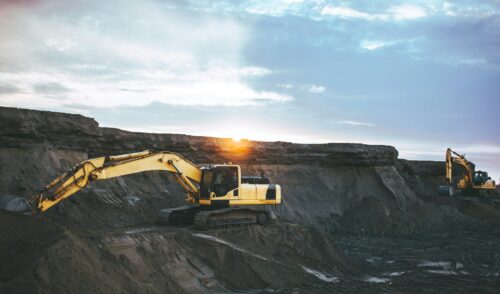
Forward momentum
back to contentsInstallation of a core catcher, or melt trap, has recently begun at Unit 4 to reach another milestone for the El Dabaa construction project. The ceremony marking the event and held in the New Administrative Capital of Egypt was attended by Rosatom’s top managers and the country’s high-ranking officials.
Egyptian Minister of Electricity and Renewable Energy Mahmoud Esmat reiterated that the El Dabaa nuclear power plant project was under close supervision and the works were on schedule, with every project stage and grid connection to be finished to deadline.
Mahmoud Esmat also explained Egypt’s energy strategy, saying it was based on a balanced diversification between energy sources and included renewables to reduce carbon emissions. The minister emphasized the importance of using civil nuclear technologies to ensure sustainable development and achieve the targets set, particularly in electricity generation.

The core catcher is itself a long-lead piece of equipment. It consists of several components weighing a total of 700 tonnes (its body alone weighs 155 tonnes).
Commenting on the beginning of the installation, Rosatom chief Alexey Likhachev pointed out that the core catcher was a key safety component of Generation III+ power units. “It is symbolic that we are starting its installation at Unit 4 on the Nuclear Power Day celebrated in Egypt on November 19. Construction works are progressing at full speed at each of the four units of Egypt’s first nuclear power plant in compliance with the international requirements. Rosatom makes safety a priority in its every project, and the Egyptian construction site is no exception for us,” Alexey Likhachev said.
El Dabaa is not Rosatom’s only project with several power units being built concurrently, in a conveyor-like fashion. Two VVER 1200 reactors are simultaneously under construction in each of Bangladesh and China. Four power units of the same type are being constructed in Turkey. In early December, workers installed the main components of the reactor pit, a dry shield and a support frame, at Akkuyu Unit 4. They will ensure maximum reliability of the reactor operation. Hungary, which operates four power units with VVER 440 reactors, plans to pour the ‘first concrete’ for the fifth and sixth units with VVER 1200 reactors as soon as next year. Six power units with VVER 1200 reactors are currently in operation: two at each of the Novovoronezh and Leningrad nuclear power plants in Russia, and another two at Astravets in Belarus.
Insight into El Dabaa
Involvement of local companies in the ambitious project of building Egypt’s first nuclear plant was discussed at the 5th Egyptian Nuclear Industry Development Forum held in early December in Cairo as part of the Nuclear Energy Week. The forum is held annually by Rosatom’s Engineering Division and the Nuclear Power Plants Authority (NPPA) of Egypt. It was attended by about 180 people representing over 50 companies from Russia, Egypt, Saudi Arabia, South Korea, and France.
The attendees discussed the El Dabaa NPP construction process, Rosatom’s procurement system and procurement specifics of the project, local sourcing for the needs of the nuclear power plant, and engagement of local suppliers.
“El Dabaa NPP is one of the largest nuclear construction projects. It will meet Egypt’s growing electricity needs and ensure its energy security. We are pleased that more and more local companies are involved in the project to build the continent’s first nuclear power plant with Russian Generation III+ technology as this will make Egypt a regional technology leader,” said Alexey Kononenko, Vice President of AtomStroyExport (ASE) and Director of El Dabaa Construction Project.
The suppliers and Rosatom representatives also discussed the prospects of nuclear technology in Egypt, development of the El Dabaa NPP infrastructure, proceedings of the joint local content committee, and the application of Russian and international standards in the production of equipment. Individual sessions were dedicated to the cooperation in consortium with Korea Hydro and Nuclear Power (KHNP) and the role of the El Dabaa project in achieving the UN Sustainable Development Goals.




